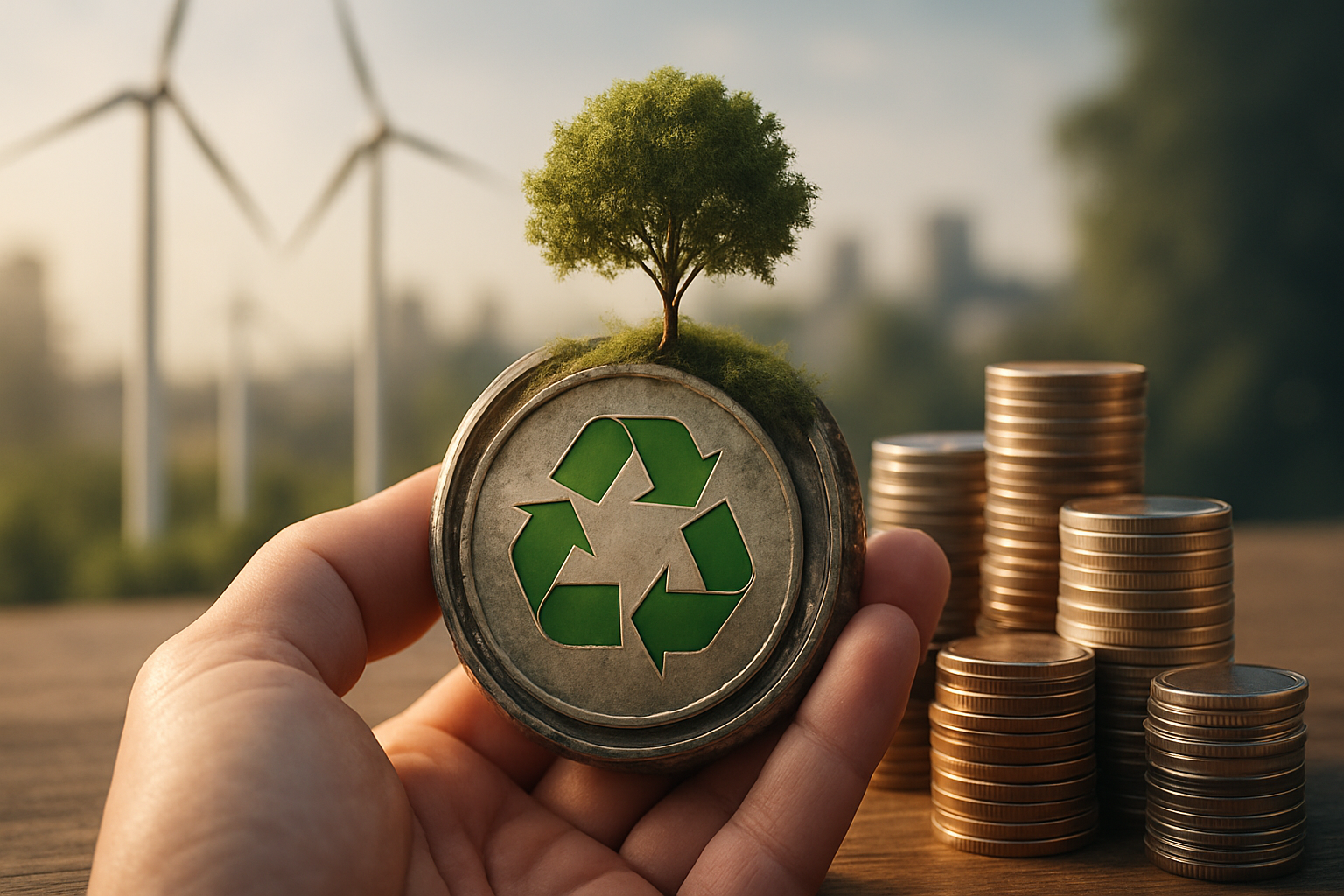The Circular Economy: A New Frontier in Financial Innovation
In a world grappling with resource scarcity and environmental concerns, the circular economy emerges as a groundbreaking paradigm shift. This innovative approach to economic systems is reshaping industries, influencing investment strategies, and opening up new avenues for financial growth. As we delve into the circular economy's potential, we'll explore how it's transforming traditional business models and creating exciting opportunities for forward-thinking investors.

Understanding the Circular Economy
The circular economy is built on three fundamental principles: designing out waste and pollution, keeping products and materials in use, and regenerating natural systems. This approach challenges businesses to rethink their entire value chain, from product design and manufacturing to distribution and end-of-life management.
In practice, this can involve developing products with longer lifespans, implementing take-back programs, or creating innovative business models based on sharing or leasing rather than ownership. Companies that successfully adopt circular principles often find themselves reducing costs, improving resource efficiency, and building stronger customer relationships.
The Financial Implications of Circularity
The transition to a circular economy presents both challenges and opportunities for the financial sector. On one hand, it requires significant upfront investment in research, development, and infrastructure. On the other, it opens up new markets, reduces long-term risks associated with resource scarcity, and aligns with growing consumer demand for sustainable products and services.
For investors, the circular economy offers a range of potential opportunities. These include investing in companies that are leading the way in circular innovation, supporting the development of new technologies that enable circularity, or financing the infrastructure needed to support closed-loop systems.
Circular Business Models and Their Impact
One of the most exciting aspects of the circular economy is the emergence of innovative business models. These models are not only environmentally sustainable but also financially viable, often leading to increased profitability and customer loyalty.
Product-as-a-Service (PaaS) is one such model gaining traction. Instead of selling products outright, companies retain ownership and provide ongoing service and maintenance. This approach incentivizes manufacturers to create more durable, efficient products while providing customers with hassle-free access to the latest technology.
Another promising model is the sharing economy, exemplified by companies like Airbnb and car-sharing services. By maximizing the use of existing assets, these platforms create value from underutilized resources, challenging traditional notions of ownership and consumption.
Investing in the Circular Economy
For investors looking to capitalize on the circular economy trend, there are several avenues to explore. Many established companies are pivoting towards circular practices, offering opportunities in familiar markets. Additionally, a new wave of startups is emerging, focused exclusively on circular solutions.
Key sectors to watch include:
-
Waste management and recycling technologies
-
Renewable energy and energy efficiency
-
Sustainable agriculture and food systems
-
Circular fashion and textiles
-
Sharing economy platforms
-
Remanufacturing and refurbishment services
When evaluating potential investments, it’s crucial to look beyond traditional financial metrics. Factors such as a company’s resource efficiency, waste reduction strategies, and ability to adapt to changing consumer preferences become increasingly important in a circular economy.
Challenges and Considerations
While the potential of the circular economy is vast, it’s not without challenges. The transition requires significant upfront investment, changes in consumer behavior, and often, regulatory support. Investors should be aware of these potential hurdles and factor them into their decision-making process.
Moreover, as with any emerging trend, there’s a risk of greenwashing – companies overstating their circular credentials without making meaningful changes. Due diligence is crucial to distinguish between genuine circular innovators and those merely paying lip service to the concept.
Key Investment Strategies for the Circular Economy
-
Focus on companies with strong circular innovation pipelines
-
Look for businesses implementing closed-loop systems
-
Invest in enabling technologies (e.g., tracking systems, recycling tech)
-
Consider circular economy-focused funds or ETFs
-
Evaluate companies’ resource efficiency and waste reduction strategies
-
Explore opportunities in the sharing economy and Product-as-a-Service models
-
Keep an eye on policy developments that could accelerate circular adoption
As we move towards a more sustainable future, the circular economy stands out as a beacon of innovation and opportunity. By reimagining our relationship with resources and waste, it offers a path to economic growth that aligns with environmental imperatives. For investors willing to look beyond traditional models, the circular economy presents a chance to be at the forefront of a transformative economic shift. As with any investment strategy, thorough research and a long-term perspective are key. The circular economy is not just a passing trend but a fundamental rethinking of how we create and consume value – one that promises to reshape the financial landscape for decades to come.





